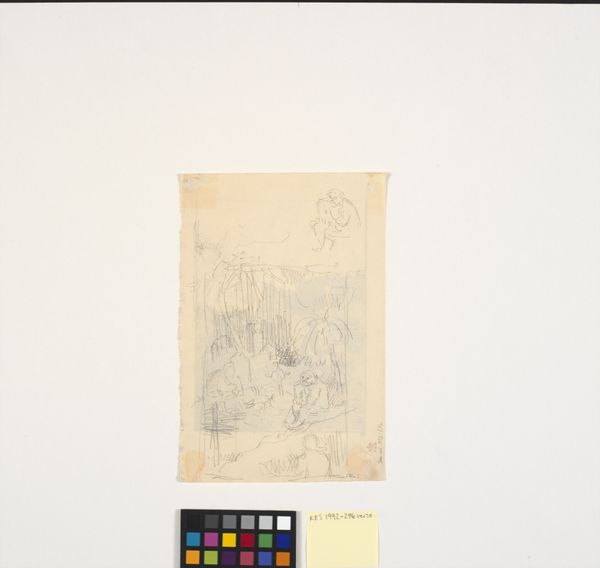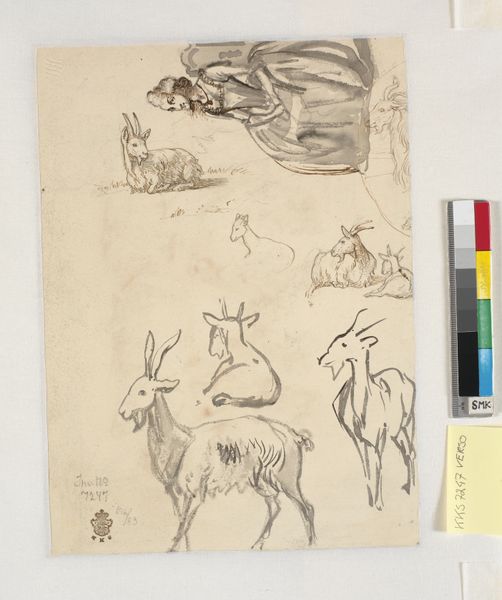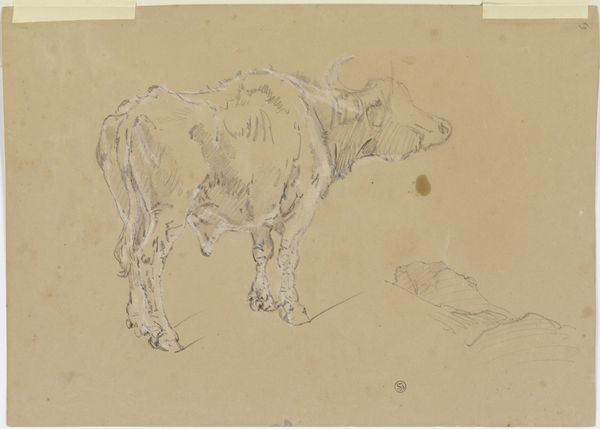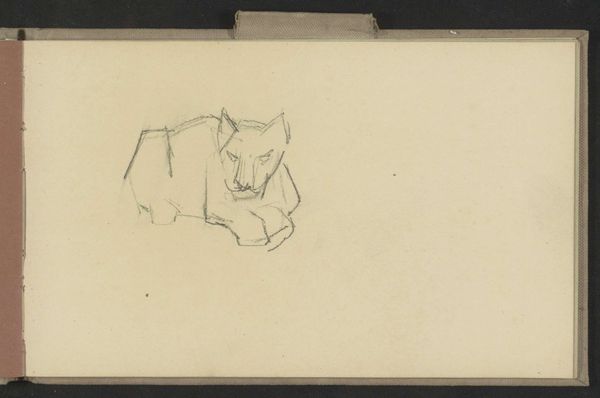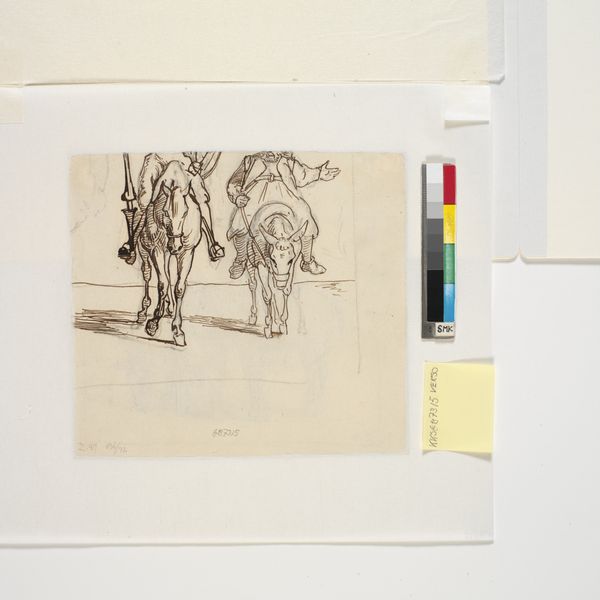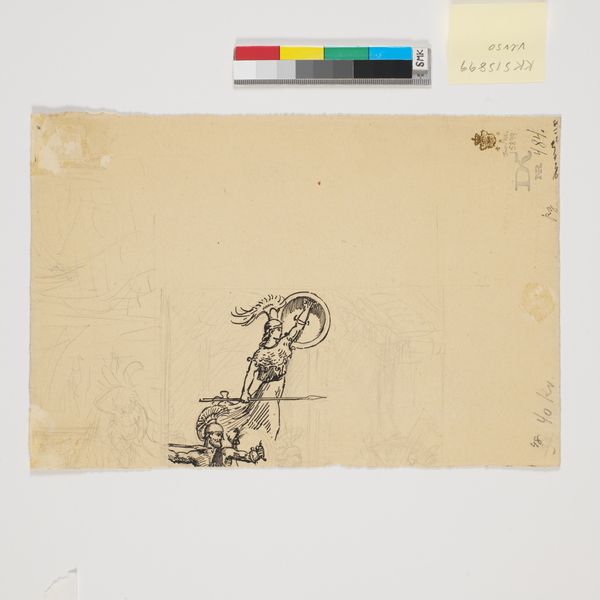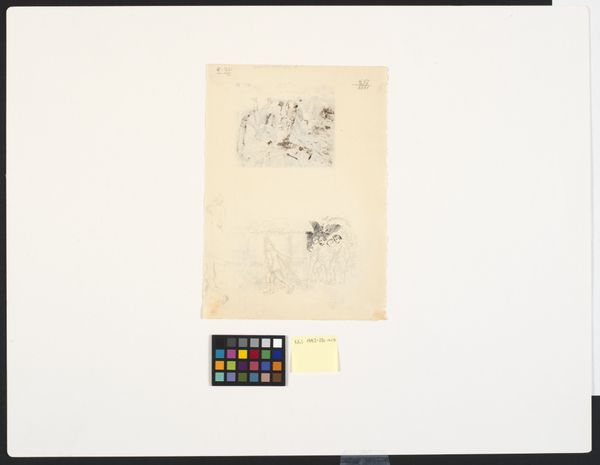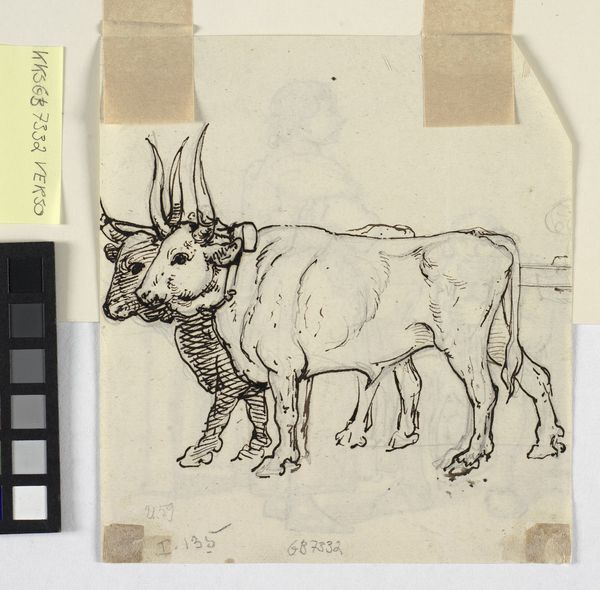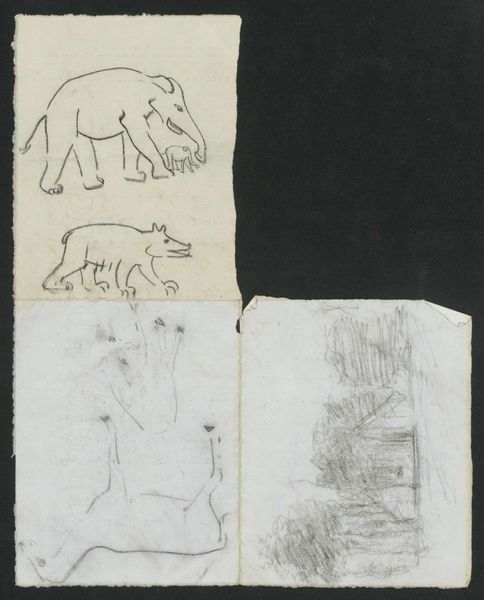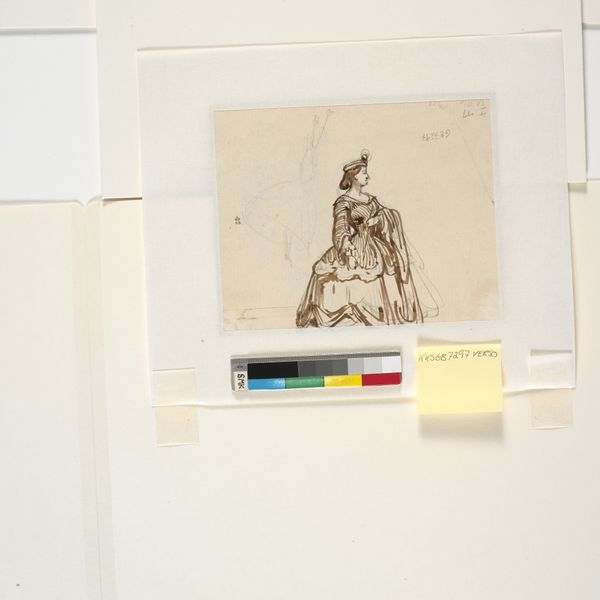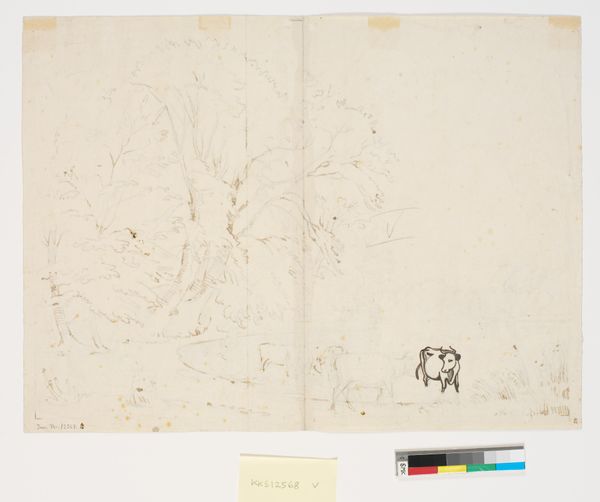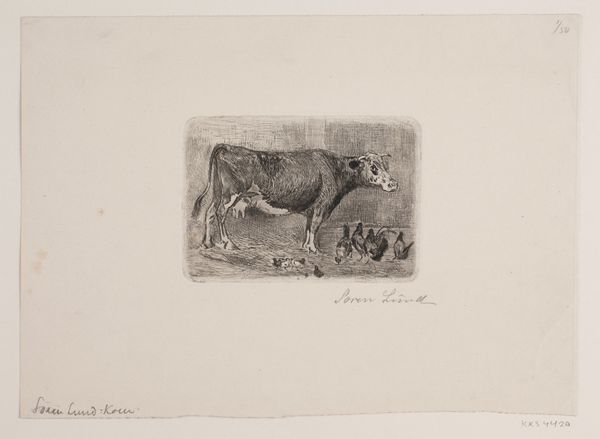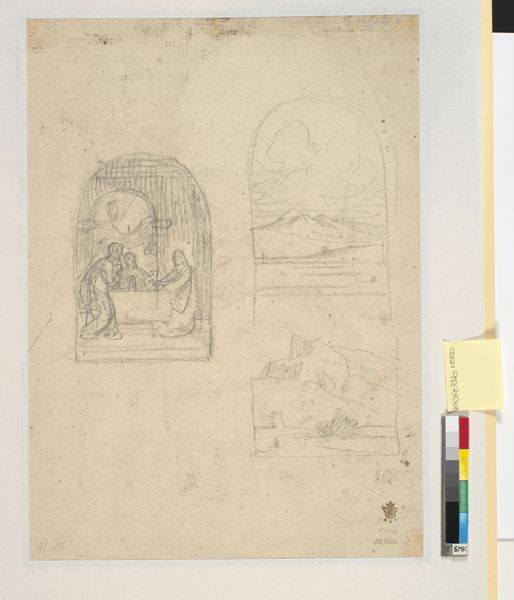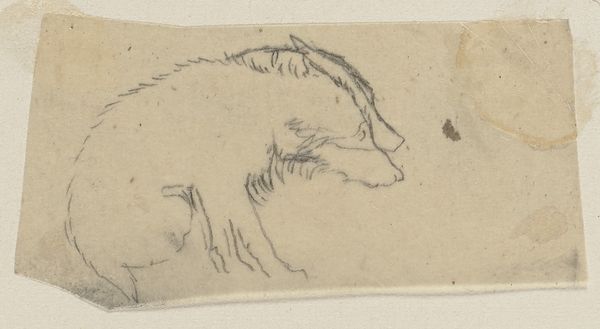
Illustration til Den lille hvide kat samt skitser af gående mænd 1923 - 1926
0:00
0:00
drawing, paper, ink, pencil
#
drawing
#
narrative-art
#
landscape
#
paper
#
ink
#
pencil
Dimensions: 125 mm (height) x 224 mm (width) (bladmaal)
Curator: I'm struck by the raw quality of this preliminary illustration. It is called "Illustration til Den lille hvide kat samt skitser af gående mænd," or "Illustration for The Little White Cat with Sketches of Walking Men," completed sometime between 1923 and 1926 by Niels Skovgaard. It employs ink and pencil on paper, a study of motion, narrative and form, currently held here at the SMK. Editor: My first thought? Unease. The sketch on the right is lively enough with those figures hurrying along. But the more skeletal sketches on the left, so faint, seem like lost souls, don't you think? It reminds me of a grim shadow play. Curator: I see your point about the figures, but I find their presence more like a palimpsest, a visual memory layered with time and purpose. I suspect the ghostly images capture the artist at work, circling forms and gestures until the characters emerge that suit Skovgaard's interpretation of the "The Little White Cat." It shows his thought process. Editor: That's an interesting connection, the process laid bare... But why that subject? Fairytales were definitely weaponized in the early 20th century. With its dark shadows and angular forms, it could also signify the encroaching industrialism on a fragile world of folk narrative. This reminds me of contemporaneous socialist realism. Curator: It may also simply relate to how folklore allowed certain persistent visual metaphors and allegorical concepts to propagate among people. By drawing on those, his images access archetypes lodged in the viewer's own imagination. Editor: And in what ways do these archetypes empower or restrict meaning? For instance, why emphasize the brisk walking away? It might suggest anxiety surrounding the place of traditional narratives. Curator: Possibly, and perhaps that ambiguity is what's compelling about these studies. Skovgaard captures that liminal moment before characters and narratives harden into place. These figures, in their ephemerality, retain some of the original magic of storytelling, open for our reading. Editor: I'm still sitting with the unease of lost potential...But I admit the visual layering reflects how these figures negotiate between a collective narrative and personal freedom. Curator: Ultimately, Skovgaard delivers us more than mere illustration. The artist gives us something deeper to ponder as we find echoes of our own stories embedded within these haunting frames.
Comments
No comments
Be the first to comment and join the conversation on the ultimate creative platform.
